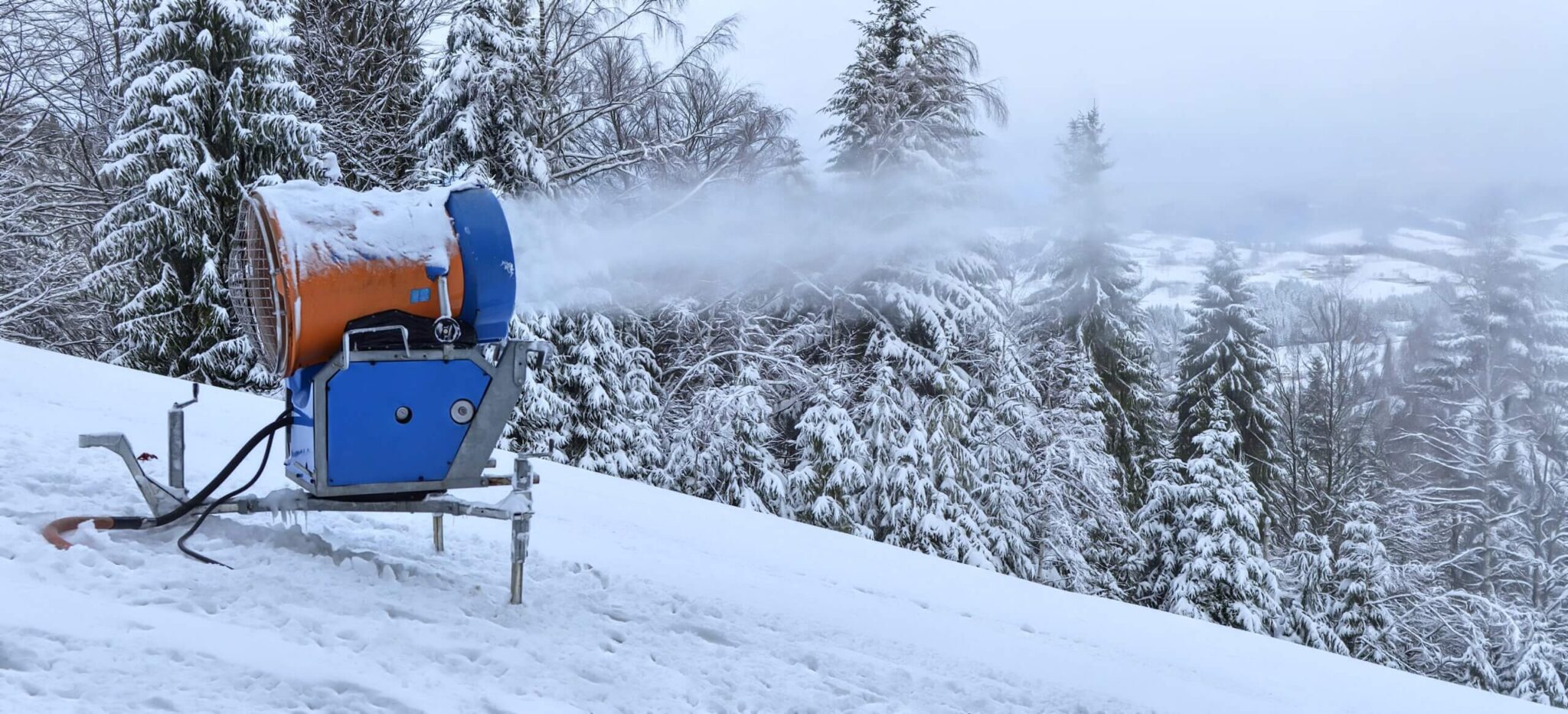In recent years, the ski resorts in the United States have felt the effects of the climate crisis directly - less snow and fewer days of skiing in the season. Ironically, the snow cannons they operate to make artificial snow on the slopes are used in the hot seasons to fight forest fires that multiply due to extreme weather conditions
By: Dr. Neta Lipman, Angle - Science and Environment News Agency
Just before we left for the "Winter Holiday Vacation", the children's schools in New York were closed for face-to-face learning due to the high number of confirmed cases of Corona in the school. The whole city has been at a new and disturbing peak of the spread of the micron for several weeks now, and so it turned out that our vacation, which was planned to last ten days, grew to two weeks. The cold and accompanying conditions did not present many choices; If it's already cold and if the corona virus is raging in the city anyway, maybe you should taste a bit of the local winter experience, travel to see snow in the north of the country and see how to ski in the American style.
The site we arrived at on Christmas Eve was relatively empty of visitors, but what was particularly noticeable in its absence was the snow. Out of about 30 ski trails that the site usually offers, only 12 were opened, and they were also closed from time to time, depending on the amount of snow that was on them. So can we continue to surf even in the ever-changing future?
Industry the skiing in the countries United States rolling every Year About 4.3 billion dollar, when in the last three years the industry grew at an annual rate of 3.8 percent. With hundreds of websites throughout the country, it seems that despite the severe climate crisis we are experiencing and despite the fact that the last year joins its companies and receives the unflattering title of "This year The heat secrets in the records", the ski resorts continue with business almost as usual - except that now this is made possible mainly thanks to cannons.
surf all season
In 1950, Tey Manufacturers established the the machine established The first the production snow stationed at sites in Connecticut and Pennsylvania. The artificial production allowed the sites to extend the period of activity and over the years the snowmaking machines ("snow cannons") were perfected and placed in many more sites. In this way, it was possible to cover the mountain and its slopes with snow that met the needs of the sport in its conditions, almost throughout the winter season (instead of temporarily closing the site and waiting for the next snowfall). The snow cannons made skiing more accessible by expanding the length of the season and geographic destinations. This, along with an economic boom and the rise of the middle class in post-World War II America, turned the American ski industry into a strong and flourishing industry in recent decades. According to website statista.com, during the 2019-2020 ski season, about 51.1 million visits by surfers were recorded on the ski sites in America.

Thus, for about seventy years, the snow cannons not only helped the ski industry but also largely obscured the visibility of climate change. Because if it is possible to ski on Mount Laban for an entire season, where is the warming that is being talked about?
But, of course, the climate crisis can perhaps be hidden a little, but not eliminated. Length The average של season ski In the United States, it was reduced for the first time in four decades in 2010. According to forecasts, by 2050, the ski season in New England is expected to be shortened by 13 percent - up to 22 percent of the average. In Europe, the Chamonix-based Alpine Ecosystems Research Center found that spring arrives two to five days earlier each decade in the Mont Blanc mountains. The amount of snow still covering the Rockies in April — a key summer water source for many — has shrunk by an average of 19 percent between 1955 and 2020, according to data compiled by the Environmental Protection Agency.
According to the Ministry of Defense הסביבה the swiss, since the 70s the glaciers on the peaks of the Alps have lost an average of one percent of their volume each year. If trend this will continue, by the year 2050 between 50 and 90 percent of the glaciers in the Alps are expected to disappear. Not only that, since 1960 the snow season in the Alps has been shortened by 38 days and it starts 12 days later and ends 26 days earlier than before.
If that were not enough, Studies Found Because urban and industrial air pollution that reaches the peaks of the Andes contains black soot, dust and other light-absorbing particles, which accelerate the heating and melting of the snow (because the pollution makes the snow darker and thus it absorbs more of the sun's radiation and warms up faster - the albedo effect).
Anti-fire cannons
But, it turns out that in recent years and as the climate crisis worsens, the snow cannons have an additional critical role: now they not only help the ski industry against economic collapse, but also serve as a first line of defense against the raging fires, the frequency of which is increasing due to climate change.
During the huge wildfires of the summer of 2021 in California, the snowmaking cannons were used as giant sprinklers to help fight the wildfires. Two years earlier, when huge fires raged in Australia, the snow cannons were used similarly to protect infrastructure in the country. Thus, in recent years, the snow cannons have provided an effective tool to deal with the climate crisis, and they are already located and operating in sensitive and vulnerable sites (in the US alone 122 Ski resorts are located in national forest lands).

The American ski industry, which is watching with open eyes how the climate crisis affects and is expected to have a fatal effect on its functioning, has begun to form action coalitions in recent years in order to create a political front for the government's fight against the climate crisis. This is how the National Ski Areas Association, the Outdoor Sports Industry Association and the American Snow Sports Association work with members of Congress such as Ann McClain from the state of New Hampshire (who chairs the Congressional Ski Committee) in calling for significant climate policy. Another initiative called: Protect Our Winters is a consortium of athletes, scientists and ski area managers working together to create an impactful climate movement to protect nature and ski areas.
Since 2000, the National Ski Areas Association has promoted training and initiatives to help ski resorts become more sustainable. Over 200 ski areas across the country have signed on enterprise To reduce their environmental impact such as switching to the use of solar energy, green construction, water recycling, local supply chain management, reducing the use of plastic, composting food scraps and more. All these together Bring to reduce Emissions in more than 110,000 tons in the last decade. This may not be what will save the world from warming, but these are undoubtedly valuable moves.
The environmental crisis is large and complex and global and affects every dimension of our lives, even when it comes to the part of our lives that includes vacations, sports, recreation and activity in the frozen outdoors. The fact that ski organizations are also calling for the government to deal with the climate crisis is another step in the right direction.
More of the topic in Hayadan:
